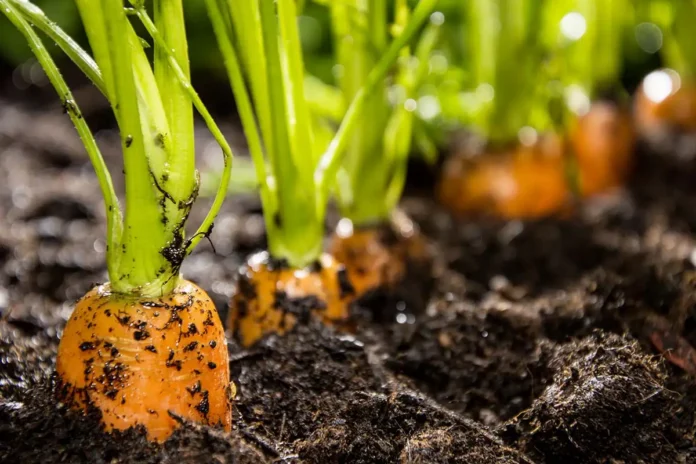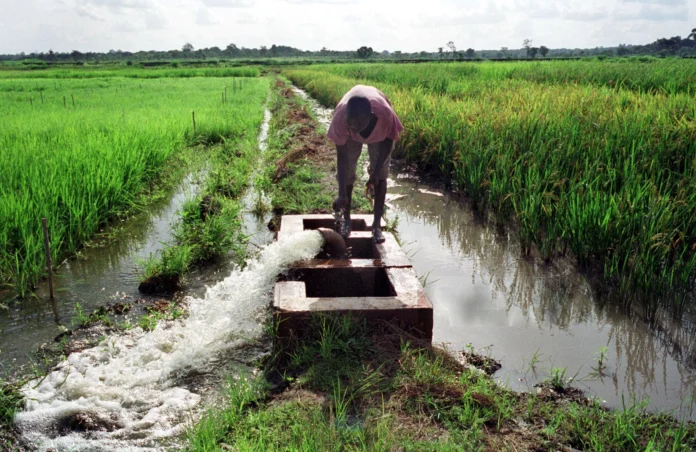Arabfields, Newsroom, Oran — In Vietnam’s Central Highlands, Lam Dong Province is redefining rural prosperity through intelligent farming practices that blend cutting-edge technology, digital transformation, and clean production methods. These innovations are not only elevating the value of agricultural goods and boosting farmer incomes but also propelling local communities toward advanced, exemplary standards of new rural development.
At the heart of this shift lies a 2.6-hectare greenhouse in Ma Sra village, Ta Nang commune, operated by farmer Phan Kim Hiep. Specializing in tomato cultivation, the facility exemplifies how high-tech interventions can yield consistent, high-quality outputs in a region historically vulnerable to weather whims.
Workers in Hiep’s enclosed greenhouse meticulously harvest clusters of uniformly ripe, vibrant red tomatoes, sorting and packing them into crates destined for Ho Chi Minh City under a longstanding supply contract. This efficient operation stems from Hiep’s bold investment over two years in a state-of-the-art model: closed-greenhouse tomato farming, drip irrigation systems, and adherence to VietGAP production standards, which emphasize food safety and sustainability.
Just two months after planting, the vines produced their initial harvest, continuing uninterrupted for four months thereafter. Through serialized production cycles, Hiep markets around 60 tons of tomatoes monthly at a steady price of 14,000 to 15,000 Vietnamese dong per kilogram. The venture sustains regular employment for 20 local workers, providing stable livelihoods in a community where agriculture remains the economic lifeline.
“Modern agriculture can no longer rely on the vagaries of the weather,” Hiep said during a recent harvest. “By integrating technologies, I gain full control over production. Greenhouses and drip irrigation conserve water, cut costs, and significantly enhance yields.”
Ta Nang commune, with more than 8,700 hectares of farmland, allocates 500 hectares to high-tech and smart agriculture initiatives. Local authorities view these approaches as foundational to rural economic growth, aligning with national new rural development programs aimed at income elevation. Future plans include expanding greenhouse and tunnel cultivation areas, promoting water-efficient irrigation, and encouraging high-value crops such as vegetables, flowers, and fruit trees that meet VietGAP or organic certifications. Emphasis is also placed on building robust consumption chains, fostering cooperatives, and forming business linkages to ensure production stability and greater product valuation.
Nguyen Tien Dien, secretary of the Ta Nang Commune Party Committee, underscored the broader impacts. “Advanced and intelligent agriculture boosts productivity and quality while paving the way for sustainable progress,” he stated. “Authorities will continue supporting farmers in collaboration and modern modeling, connecting production directly to markets to maximize the worth of local agricultural outputs.”
Province-wide, Lam Dong’s agricultural sector records an average annual growth of 5.6 percent, with rural per capita income reaching 59.9 million Vietnamese dong yearly, according to the 2025 New Rural Development Program report. The province boasts nearly 1,000 OCOP-certified products, most derived from high-tech models incorporating smart processes and integrated value chains.
Specialized production zones for vegetables, flowers, coffee, durian, and tea employ an array of sophisticated tools: drip irrigation networks, soil moisture and nutrient sensors, climate-controlled greenhouses, electronic traceability systems, and digital sales platforms. These technologies reduce operational costs, increase productivity by 20 to 30 percent, minimize environmental footprints, and enhance resilience against climate change.
Numerous cooperatives and enterprises have adopted circular agriculture models, repurposing byproducts as organic fertilizers to curb emissions and advance sustainability. Complementing these efforts, Lam Dong is cultivating smart agritourism, inviting visitors to engage in hands-on activities like harvesting vegetables, flowers, or coffee and exploring greenhouse techniques. “Experiential farms” not only promote branded agricultural products but also generate additional revenue streams for rural households.
Digital transformation remains a priority, with initiatives to establish comprehensive databases of cultivation areas, agricultural product maps, and e-commerce platforms. This evolution is essential for Lam Dong’s agriculture to amplify its value, access broader markets, and transition toward technology-driven, knowledge-based rural paradigms.
As highland communities embrace these innovations, smart agriculture stands as a durable foundation, fostering resilient, prosperous, and environmentally harmonious rural landscapes for generations to come.












